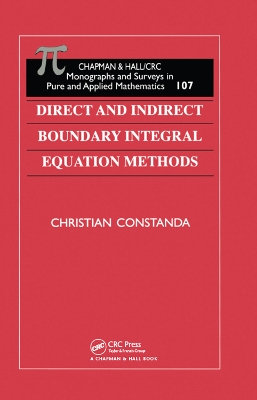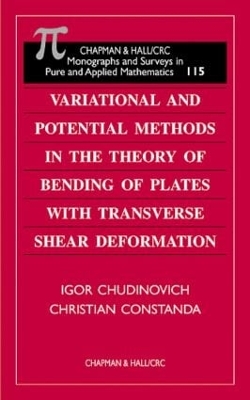Monographs and Surveys in Pure and Applied Mathematics
1 primary work • 2 total works
Book 107
Direct and Indirect Boundary Integral Equation Methods
by Christian Constanda
The computational power currently available means that practitioners can find extremely accurate approximations to the solutions of more and more sophisticated mathematical models-providing they know the right analytical techniques. In relatively simple terms, this book describes a class of techniques that fulfill this need by providing closed-form solutions to many boundary value problems that arise in science and engineering.
Boundary integral equation methods (BIEM's) have certain advantages over other procedures for solving such problems: BIEM's are powerful, applicable to a wide variety of situations, elegant, and ideal for numerical treatment. Certain fundamental constructs in BIEM's are also essential ingredients in boundary element methods, often used by scientists and engineers.
However, BIEM's are also sometimes more difficult to use in plane cases than in their three-dimensional counterparts. Consequently, the full, detailed BIEM treatment of two-dimensional problems has been largely neglected in the literature-even when it is more than marginally different from that applied to the corresponding three-dimensional versions.
This volume discusses three typical cases where such differences are clear: the Laplace equation (one unknown function), plane strain (two unknown functions), and the bending of plates with transverse shear deformation (three unknown functions). The author considers each of these with Dirichlet, Neumann, and Robin boundary conditions. He subjects each to a thorough investigation-with respect to the existence and uniqueness of regular solutions-through several BIEM's. He proposes suitable generalizations of the concept of logarithmic capacity for plane strain and bending of plates, then uses these to identify contours where non-uniqueness may occur. In the final section, the author compares and contrasts the various solution representations, links them by means of boundary operators, and evaluates them for their suitability for
Elastic plates form a class of very important mechanical structures that appear in a wide range of practical applications, from building bodies to microchip production. As the sophistication of industrial designs has increased, so has the demand for greater accuracy in analysis. This in turn has led modelers away from Kirchoff's classical theory for thin plates and toward increasingly refined models that yield not only the deflection of the middle section, but also account for transverse shear deformation. The improved performance of these models is achieved, however, at the expense of a much more complicated system of governing equations and boundary conditions.
In this Monograph, the authors conduct a rigorous mathematical study of a number of boundary value problems for the system of partial differential equations that describe the equilibrium bending of an elastic plate with transverse shear deformation. Specifically, the authors explore the existence, uniqueness, and continuous dependence of the solution on the data. In each case, they give the variational formulation of the problems and discuss their solvability in Sobolev spaces. They then seek the solution in the form of plate potentials and reduce the problems to integral equations on the contour of the domain.
This treatment covers an extensive range of problems and presents the variational method and the boundary integral equation method applied side-by-side. Readers will find that this feature of the book, along with its clear exposition, will lead to a firm and useful understanding of both the model and the methods.

